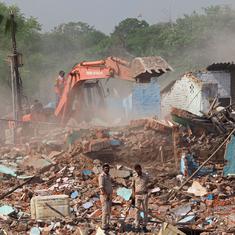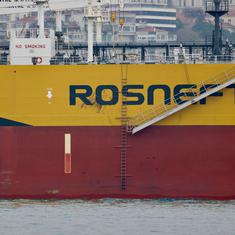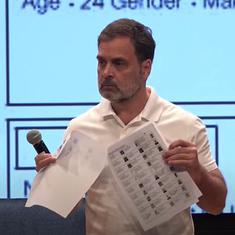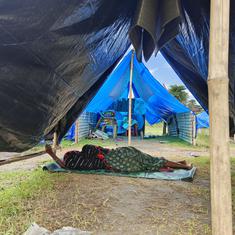Pakistan government’s spokespersons (both official and unofficial) have been trying hard to build a narrative that the country’s economy is improving, yet that narrative is finding little traction on the ground where lived reality matters more.
The current account has come into surplus, they tell the country. Exports are rising and remittances are showing record increases month after month. Growth is returning, as evidenced in indicators like the quantum index of large-scale manufacturing, cement and automobile sales and rising profitability of listed corporates. Why are people in the country not getting it?
The answer is simple: these things have little to do with most people. The poor do not toil to plug deficits. They toil to feed their families. These indicators refer to an economy that most people are not familiar with, and frankly speaking, do not care much about. They describe developments in what textbooks call the macroeconomy that matters more to the government, its creditors and big business. They matter little to those who struggle to put food on the table and pay their bills.
Stagnation in wages
Try telling the man on the street that interest rates have been slashed or the current account is in surplus and listen to the response. The only way you can link these indicators to the lot of the common citizenry is by assuming that what is good for big business is good for the people; that money made by corporates today will “trickle-down” in the form of employment and wages for the poor tomorrow. There is now sufficient evidence to establish that this rarely happens in reality.
Look at the trend in real wages for example. A few weeks ago, I wrote about the stagnation in real wages – which measures wages for various segments of the working classes adjusted for inflation – and argued that this stagnation is one of the most important developments in Pakistan’s economy today. Take a deeper look and you will be surprised at the picture that emerges.
The single most detailed examination of real wages that I can find is by Hafiz Pasha published back in December 2020. He looked carefully at real wage data from 2008 till 2018 using labour force participation surveys and used the Pakistan Bureau of Statistics’ monthly figures for 2019 and 2020 because no surveys have been conducted in these years.
Recall that 2008 was the critical year when the transition to democracy happened, and Imran Khan has gone to considerable lengths to vilify these years repeatedly in his public remarks, pointing to the mounting public debt burden that these years brought.
But those who live on wages are asking themselves a simpler question: was I better off in those years than I am today? Pasha’s data says yes. Between 2009 and 2013 “real wages showed an increase annually during these four years to just over 2%” he wrote. From 2013 till 2018 this went up to 4% per annum. Please understand these are average annual increases every year after inflation.
“Therefore, the period from 2008-’09 to 2017-’18 has been relatively good for employed workers,” he says. “They have seen an average annual increase in real wages of over 3%.”
By October 2018, real wage growth slowed to an average of 1.7%, he found, and then fell sharply, with the rate of decline ranging from 0.9% to 8.2% depending upon the category of worker. “Cumulatively, over the two year period after October 2018, real wages have fallen by 6% in the case of electricians to 12% for carpenters,” he said. “There is no doubt that labour market conditions have severely deteriorated in the last two years.”
Trickle-down economics
Pasha found that “perceptions of a boom in construction activity since March 2020”, the month in which the fiscal incentives and amnesty scheme for builders and real estate magnates was announced, “are exaggerated. Construction activity has not risen enough to raise the demand for construction workers sufficiently to lead to a rise in real wages”. Recall here that Khan billed his “construction package” specifically as a benefit for “daily wage earners” back in the Covid-19 lockdown days.
Some may want to attribute this to collapsing growth due to a macroeconomic adjustment under an International Monetary Fund programme. But notice that real wages continued rising after 2008 even though that adjustment programme was at least as tough and the attendant drop in growth was also as sharp.
Those who want to blame Covid-19 need to answer why profits of corporations have risen by record amounts in the years 2019 and 2020, the same years in which worker incomes fell sharply when adjusted for inflation. Listen carefully to how they build their argument – that this fall in real wages is temporary – and you will hear “trickle-down economics”.
If there is an indicator that matters to ordinary people it is real wages. No democratic government has allowed this indicator to go negative. The minimum wage set by Pakistan’s federal government was 4,600 Pakistani rupees in the last budget of the Musharraf regime in 2007.
Ten years later, in 2017 it had gone up to 15,000 Pakistani rupees through steady annual increases that outpaced inflation. Likewise with salaries of government employees on which private sector salary increments are pegged.
Pakistan government has only now woken up to the importance of these two crucial wage negotiations. They raised the basic pay of government employees by 25% this March, following street protests and may well announce a large increase in the minimum wage in the forthcoming budget. But it is too little too late. The wages of truth are bitter, and the bitter truth is that this government has ignored the poor for too long and now the consequences are piling up faster than they can address them.
This article first appeared in Dawn.










